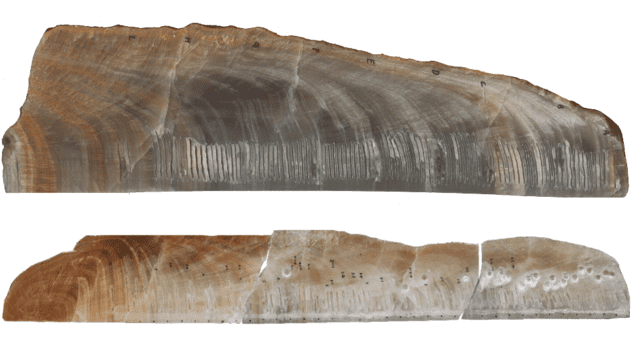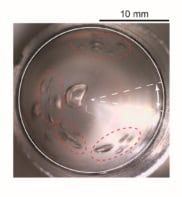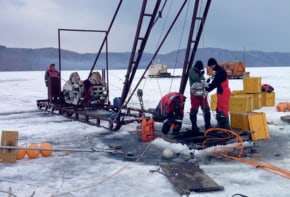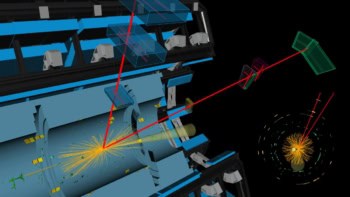
Scientists from China and the US have created a precise record of atmospheric radiocarbon for the last 54,000 years, from isotopes locked inside a pair of stalagmites. They say their study helps refine and calibrate the atmospheric radiocarbon record and provides insights into the causes of variations in atmospheric radiocarbon over time.
The radioactive carbon-14 isotope is absorbed from the atmosphere by living organisms and then starts to decay at a known rate once they die. Radiocarbon dating measures the residual levels of this isotope estimate the age of organic materials and it has transformed archaeology and climate science, and other research disciplines.
As levels of carbon-14 in the atmosphere fluctuate over time, to enable accurate dating the atmospheric carbon-14 record needs to be calibrated against a calendar time-scale. Tree rings provide some of the best information on historic radiocarbon levels, as trees take carbon dioxide directly from the atmospheric and turn it into cellulose with little delay. But the continuous record from tree rings only goes back around 14,000 years.
Dead carbon fraction
Beyond the 14,000 years, lake sediments, ice cores and other sources of organic material can be used. These do not always provide a direct record of atmospheric carbon levels, however, as the carbon-14 has often passed through other systems that add more carbon to the mix. The water that helps form a stalagmite, for example, will have passed through soil and rock – collecting additional carbon. This “dead carbon fraction” needs to be accounted for, which is easier the smaller and more consistent it is.
The pair of stalagmites used in the latest research are from the Hulu Cave in Jiangsu Province, Eastern China. Originally these stalagmites were collected to study historic Asian monsoon variability, Hai Cheng at Xi’an Jiaotong University in China, told Physics World.
“The Hulu Cave stalagmites are very special since their dead carbon fraction is low and stable” Cheng says. His colleague, Lawrence Edwards at the University of Minnesota, adds, “They include very little carbon derived from the limestone around the cave, most of the carbon came directly from the atmosphere.”
To date the carbon-14 in the stalagmites, the researchers compared it with adjacent levels of thorium-230, a radioactive isotope with a date record that goes back further than that for atmospheric radiocarbon. The team was able to align atmospheric carbon-14 levels with around 300 new dates, ranging from 54,000 to 18,000 years ago.
Magnetic field reversal
The results help explain historic variations in atmospheric radiocarbon and could add clarity to geological events such as the Laschamp geomagnetic excursion. This was a brief reversal of the Earth’s magnetic field around 43,000 years ago. According to the team, the carbon-14 data has similarities to the geomagnetic record and indicates an abrupt increase in radiocarbon around the Laschamp excursion. This, they say, suggest that changes in the Earth’s magnetic field could be responsible for much of the historic fluctuations in atmosphere radiocarbon.
“It also confirms, as had previously been surmised, that as the last ice age ended changes in the carbon cycle in the ocean, associated with climate change, caused changes in the radiocarbon levels,” says Edwards.

Stalagmites boost precision of carbon dating over 54,000 years
Timothy Jull, of the Department of Geosciences at the University of Arizona, says that the study helps refine the carbon-14 record and adds a lot of information about the Laschamp event by improving the record for that period. “That’s its main advantage to me, it adds clarity to what’s happening 35,000–45,000 years ago.” He cautions, however, that at other points there are large levels of uncertainty in the data.
According to Tom Higham, of the School of Archaeology at the University of Oxford, this work is an exciting and important contribution to radiocarbon data as it is “a very detailed and high coverage record”. He adds that it overlaps well with other records and is in “good agreement with tie points such as the Campanian Ignimbrite volcanic ash event”, indicating its accuracy.
“This new dataset will have significant implications for our ability to calibrate radiocarbon and get the right answers to some of the big questions prehistorians are grappling with,” Higham says. “When do different species of animal disappear over the last 50,000 years? When do Neanderthals go extinct and how? When did humans begin to make art? Many questions have chronology at their heart and his new curve helps us to get a better resolution on the answers.”
The research is described in Science.



